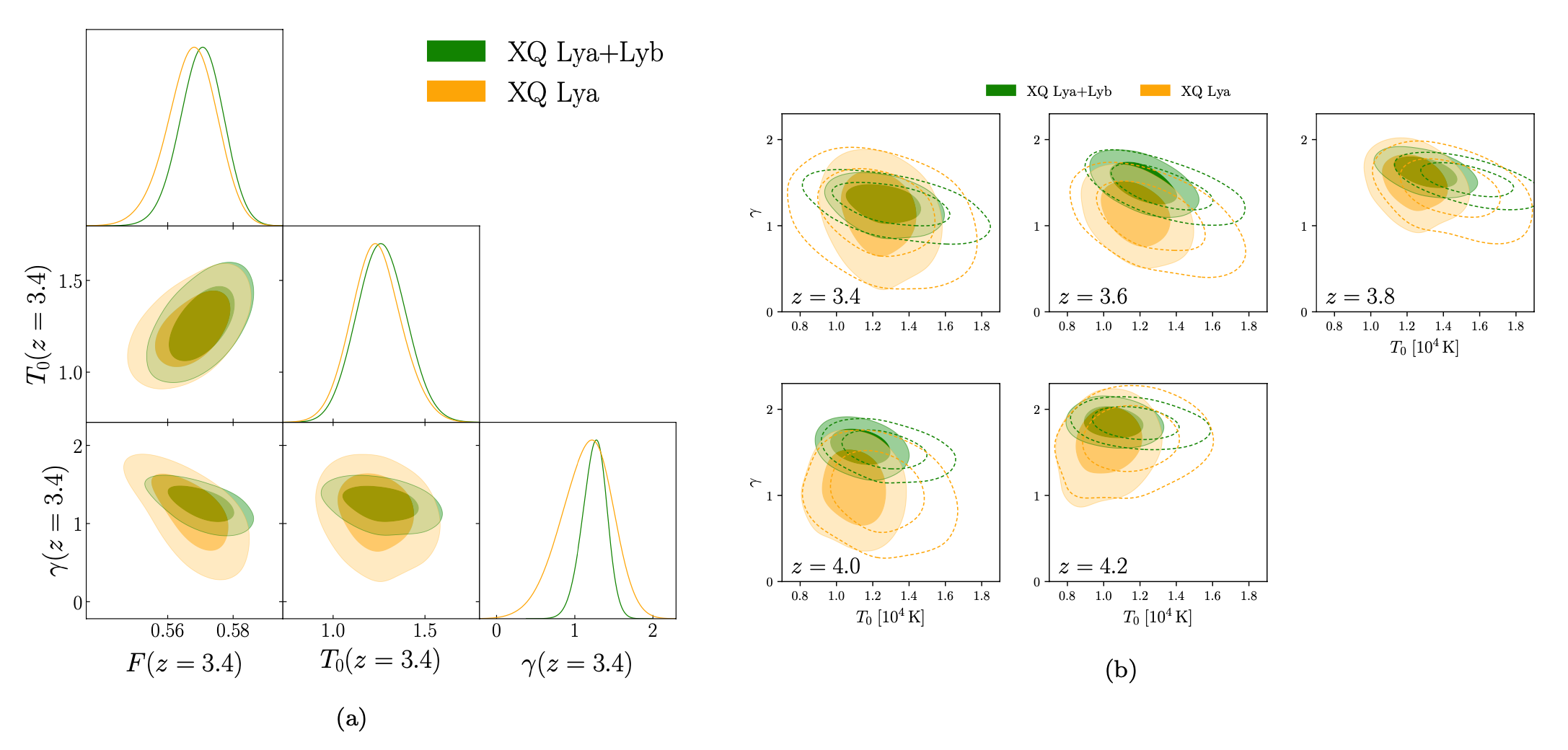Thermal history of the intergalactic medium
This work is published in the Monthly Notices for the Royal Astronomical Society (MNRAS) journal and can be found here.
Radiation from bright, distant quasars travel through vast swathes of nearly empty space called the intergalactic medium (IGM). Neutral hydrogen in the intergalactic medium causes absorption features in the quasar spectrum known as the Lyman-alpha forest. Statistics of the Lyman-alpha forest have been successful for constraining the warmness/fuzziness of dark matter as well as the timing of reionization processes. But the standard statistic, the Lyman-alpha forest power spectrum, is unable to strongly constrain the IGM temperature-density relation, which is related to the IGM thermal history and the formation of galaxies. In this work, we explore the utility of the Lyman-beta forest, which is sensitive to higher densities than the Lyman-alpha forest, to improve constraints on the IGM temperature-density relation.
A power spectrum is the fourier transform of the correlation function. It is useful to reveal the existence of repetitive patterns in a signal process (or lack thereof). Commonly, the power spectrum is used in for time-series, sonic data but, in this context, it is used to measure the correlation structure of a signal in space. Our "signal" are absorption features in the Lyman-alpha forest which probe the matter density fields that trace the large scale structure of the universe. The 1D flux power spectrum of the Lyman-alpha forest is used measure the amount of structure at various spatial scales.
The 1D power spectrum of the Lyman-alpha forest has long been the standard statistic to study absorption features in quasar spectra because it is able to isolate various systematics and noise from the shortest wavelengths (which are the most interesting!). Unfortunately, the Lyman-alpha forest power spectrum only is sensitive to a narrow range of densities and so it can only measure temperature at those densities. This limits its sensitivity to heating and cooling processes relevant at other densities and reduces it's capability to constrain relevant parameters. Therefore, we supplement the Lyman-alpha forest measurements with a measurement of the coeval Lyman-beta forest. The Lyman-beta forest is sensitive to higher density gas which means that it is more sensitive to the impact of galaxies. Additionally, the combination of both forests enables measuring the density scaling of the temeprature, which reflects the heating from the first galaxies.
Our inferences from this measurement appear to latch consistently onto the recent tight lower-redshift Lyman-alpha forest constraints. The z = 3.4 − 4.7 (around 2 billion years after big bang) trends we find using the Lyman-alpha Lyman-beta cross correlation show a flattening (γ getting closer to 1) of the density scaling of the temeprature with decreasing redshift. This is the trend anticipated from ongoing Helium-II reionization and there being sufficient time to reach the asymptotic temperature-density slope after hydrogen reionization completes. Furthermore, our measurements provide a consistency check on IGM models that explain the Lyman-alpha forest, with the cross correlation being immune to systematics that are uncorrelated between the two forests, such as metal line contamination.
